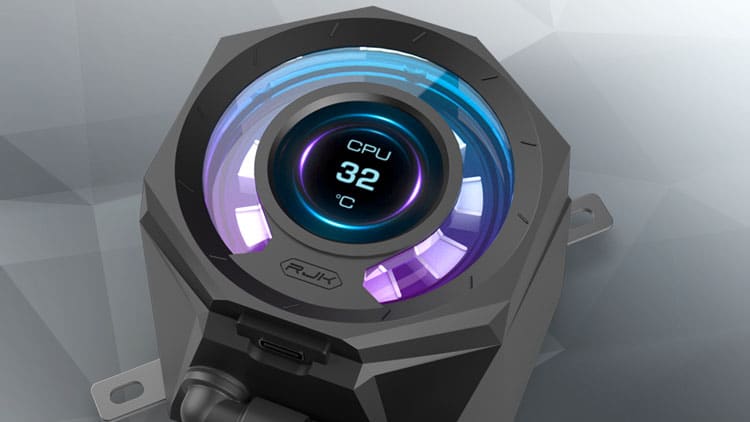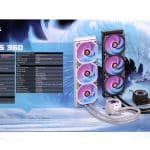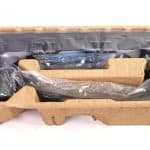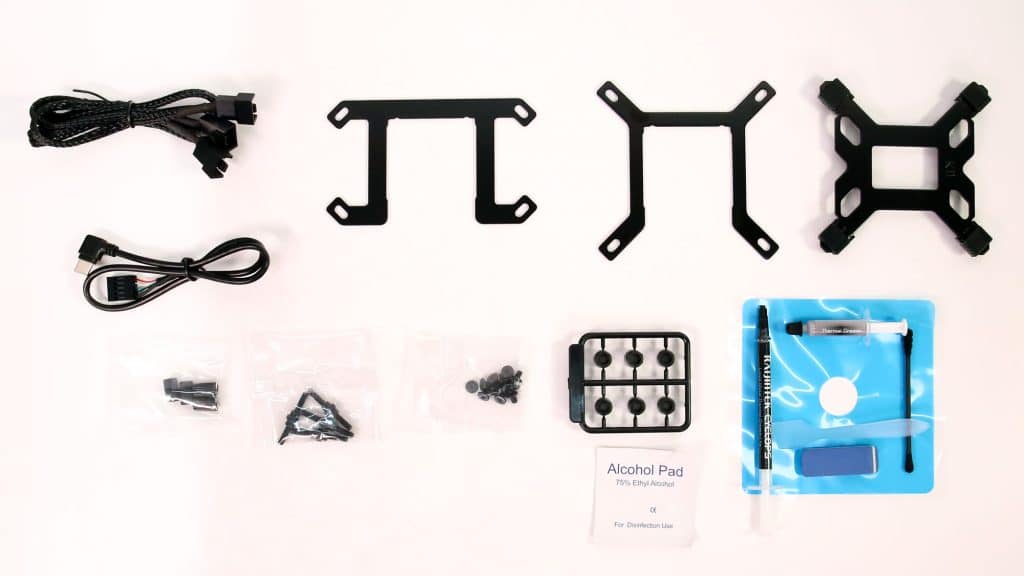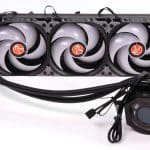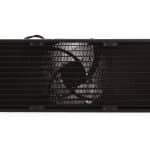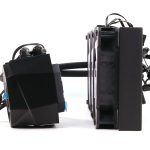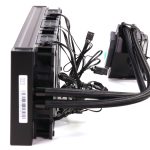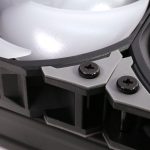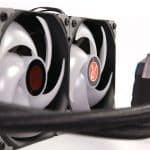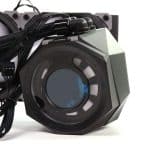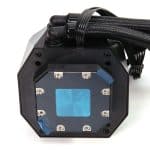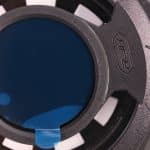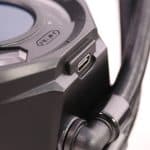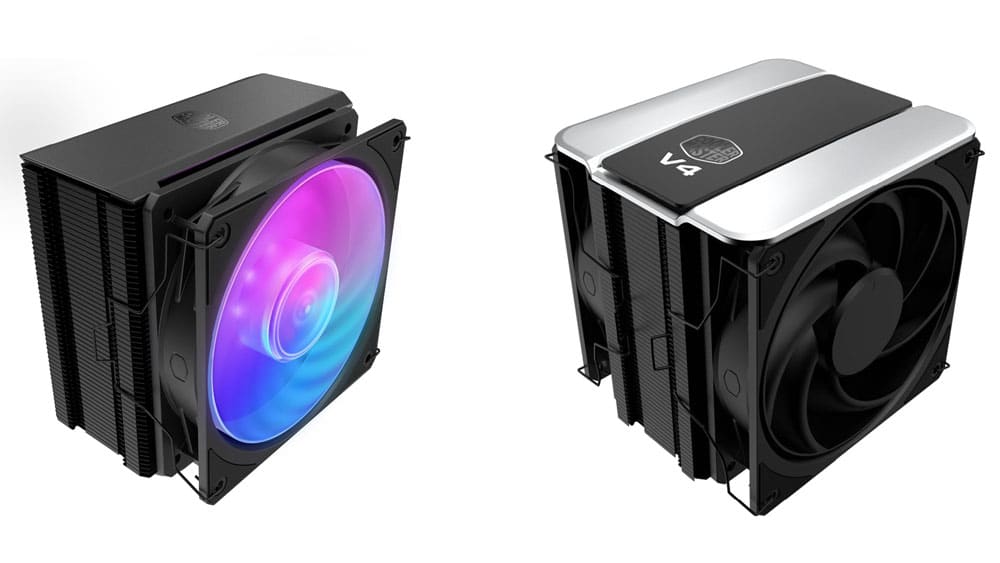Box, Contents, Bundle & Software
The cooler comes in a large box featuring fancy graphics. At the internals, the protection is pretty good.
The bundle includes the following:
- Intel Bracket
- AMD Bracket
- Intel backplate
- 6x Mainboard stand-offs
- 4x Cross caps
- 4x Stand-off screws
- 12x Screws #6-32
- Liquid metal tube
- Liquid metal grease mask
- Cotton swab
- Thermal grease
- Plastic brush
- Alcohol pad
- Eraser
- Type-C cable
- Installation guide
The bundle is rich, and besides the liquid metal tube, you will also find one with “normal” thermal paste if you do not want to mess with the liquid metal, which you need to be careful with during installation because it is conductive.
The AIO’s radiator has twelve channels: six for the hot liquid intake and the other six for the cold water return. The radiator’s thickness is 27mm, so combined with the standard 25mm fans, the overall thickness is 52mm.
The three Ageras fans come in contact with the radiator through rubber pads to minimize vibrations, which can be an annoying noise source. Lastly, the radiator’s fins have a moderate density, so the fans don’t have to achieve top static pressure performance to remove the heat from them. The fans include a PWM splitter, so you can connect all three and use a single cable to power them and control their speeds. The same goes for the ARGB signal. It would be ideal if the power and ARGB signals were transferred through a single cable, making the design more appealing and the installation process far more straightforward. Dealing with many cables is always a nightmare, especially when three fans are involved.
The block base is made of copper with a nickel-plated coating for better thermal conductivity. According to the brand, the water contact area is increased by 30% compared to traditional designs to deliver higher heat dissipation performance. The LCD screen on top of the block is a nice feature, and you can control what it shows through the provided software.
Here are some screenshots of the software. It doesn’t allow you to change the pump speed; this can be done through your mainboard’s BIOS or other compatible software that can control PWM speed (e.g., fan control).
